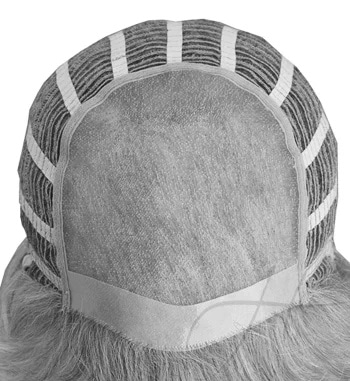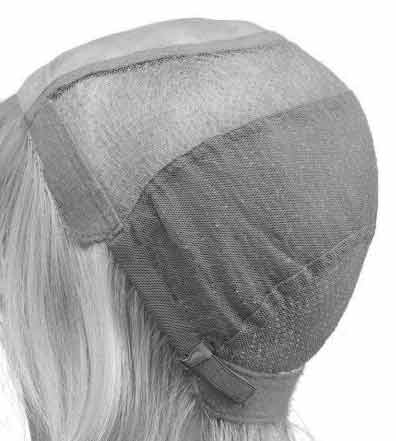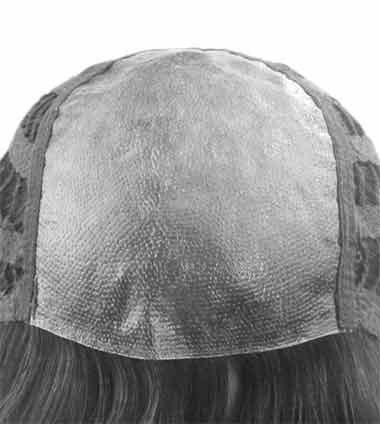Wig Types - UNice Takes You to Explore the World of Wigs
You may already be familiar with wigs, but do you really know anything about wig types? Becoming familiar with the various types of wigs will help you make an informed buying decision.
Our summary below will point out the pros and cons of each type of wig cap. Understanding the different types of wig cap construction will give you a better understanding of how each type of wig is made
Standard & Capless Wig Construction
Lace Front Wigs
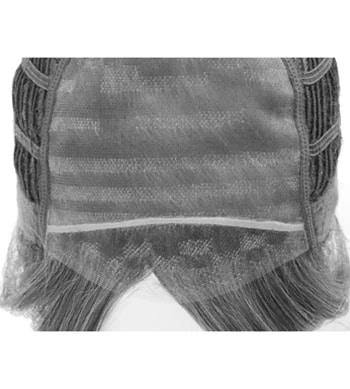
The front hairline of a lace front wig is made of lace material, with individual hairs tied at the bottom. The rest of the cap can be made using any of the methods listed above. The lace front wig creates a natural front hairline that appears to be hair growing from the scalp.
● There is a nearly undetectable hairline.
● Tape or adhesive can be used to secure the lace to the scalp.
● Each hair is hand-tied to a piece of clear lace by hand.
● The lace is delicate and should be handled with caution.
● Those with extremely sensitive scalps may find the wig's lace edges irritating. ("If your scalp is sensitive, use a nail buffer to soften the edge and underneath. Avoid cutting the lace on ready-to-wear lace front wigs since this could cause fraying down the line." Wig expert Jones suggests in How to Wear a Lace Front Wig—Without Damage)
● Lace front edge wigs are ideal for hairstyles that require the hair to be pulled back away from the face, resulting in a natural hairline.
Capless Wigs
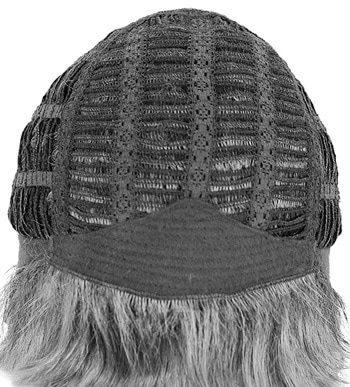
A capless wig has to tease at the crown or roots to give lift and volume to the hair. The teasing is purposeful to conceal the cap underneath.
● Low maintenance and ready to wear right out of the box.
● Strips of hair called "weft" are sewn together by machine to form hairpieces.
●The "weft" (hairspring) provides varying degrees of openness in the hat. If the weft is between 20-75% open, the wig is classified as "capless". If it is more than 90% open, it is referred to as "fully capless" or "100% capless". The higher the degree of openness, the cooler and more comfortable the wig will wear.
● Cannot be moved.
● There are various qualities, from very low-end to excellent. We only offer high-quality classic caps.
● Standard (or classic) cap wigs offer excellent quality at an affordable price. They are the lowest-priced type of wig.
Monofilament Wigs
For this wig type, individual hairs are tied to a fine mesh material that allows light and air to pass through.
● Made of an ultra-fine mesh fabric that blends with any skin tone and gives the appearance of real hair growing out of the scalp.
● Hair comes out of the cap vertically - in the same direction as natural hair growth.
● Offers a variety of styling options, as hair can be styled or parted in any direction.
● Provides the most comfortable and natural look. Great for sensitive scalps.
● Lightweight and breathable for warm weather.
● Should be handled more gently than standard or machine-made caps.
● Double-layer monofilament tops" have an extra layer of soft material for added comfort.
● Monofilament wigs are especially popular among women with hair loss due to their affordability and extremely natural appearance.
100% Hand-tied Wig
● 100% hand-knotted wig tops
● Each hair fiber in this wig is painstakingly hand-knotted to a soft fabric base.
In addition to the cap, this type of wig's hand knotting is usually (but not always) done around the cap's edge. When the hair is pulled back, this process hides the material of the cap and creates a natural look.
● Hand-tied wigs offer the most versatile styling options, as hair can be styled or parted in any direction.
● The softest and most comfortable wig cap style. Ideal for sensitive scalps or hair loss.
Wig caps have a certain amount of elasticity that many people find very comfortable.
Requires more gentle care than machine-made caps.
● Lightweight and breathable.
Hand-tied wigs are the most luxurious and provide the most natural appearance. They are also the most expensive wig type.
Skin-top Wigs
Skin-top wigs were once considered a high-end option for those who could afford them. Because of advancements in wig construction, the skin-top wig has largely been replaced by the monofilament wig, which is more comfortable and less expensive.
● Individual hair fibers are implanted in a synthetic plastic scalp base in this wig type.
● Has the same pattern of hair distribution as a monofilament cap. The hair grows out of the cap vertically, just like natural hair does.
● It is possible to make it by machine or by hand. Handmade hair fibers are randomly placed, giving it a more realistic appearance. The higher the quality, the finer the hair grouping.
● It might be a little warm on the scalp.
FAQ About Wig Types
Which Wig Style Looks the Most Natural?
We strongly recommend using a monofilament wig cap if it is within your budget. Monofilament wigs mimic individual hairs growing from the scalp and appear very natural. They can also be parted in different directions to create a more varied look.
A lace front edge wig will provide you with a natural hairline and will push your hair back and away from your face.
A 100% hand-tied wig is a high-end option that is both comfortable and appears to be growing from the scalp throughout the cap. All of these cap styles will give the wig a more natural appearance. Of course, the most natural-looking wig will be one that is styled and colored to match your skin tone.
Have a stylist who is familiar with wig styling on hand. Trim your wig to fit your face shape for a truly unique look. This will make your wig appear more natural.
Which Wigs Are Best for Sensitive Scalps?
Chemotherapy-induced hair loss frequently results in a sensitive scalp. Wigs with 100% hand-knotted or double monofilament wig caps are usually the best choice for sensitive scalps. Traditional wig caps are softer and gentler on the sensitive scalp of these wig caps.
There are a variety of wig accessories available to make any wig feel more comfortable on a sensitive scalp. Our UNice EasiContour™ V Part wigs can relieve wig pressure on the scalp and reduce shear forces that can cause pressure sores. They are non-allergenic and easily sterilized.
Wearing a wig cap underneath the wig will create a soft barrier between the wig and the scalp. They are made of a soft, breathable material that soothes your scalp. Bamboo wig caps are also naturally antibacterial, making them ideal for cancer patients.
What Are the Best Wigs for People With Thinning Hair?
A hair topper could be an excellent solution for women who are experiencing early hair loss. A hair topper is a piece of hair that can be worn to conceal thinning hair or areas of hair loss on the crown, hairline, or top of the head. Because they can blend in perfectly with your existing hair, hair toppers are an excellent option for women who do not have complete hair loss. We have a large selection of hair toppers that can be attached in a variety of ways to conceal areas of hair loss or thinning.
Hair toppers can also be used to add volume to existing hair or to hide new hair growth in between coloring.
Choosing Your Wig
When deciding which type of wig is best for you, consider the cost, wig style, and your overall lifestyle. Each type of wig cap has advantages and disadvantages. Following your type selection, you must select your style, material, and color. Don't forget to look through UNice's women's wigs for ideas!

